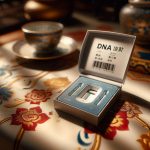In an engaging conversation, Brian Burke, the visionary leading strategy and corporate development at Horizon Discovery, shed light on how the company is revolutionizing the life sciences field. With a focus on gene editing and modulation, Horizon Discovery is at the forefront of bridging research findings to therapeutic solutions. Their suite of innovative tools and services empowers researchers to delve deep into gene functions, uncovering pivotal genetic factors behind diseases.
By leveraging Horizon’s cutting-edge resources, scientists are not only identifying key players in genetic illnesses but also advancing toward personalized medicine through biotherapeutic, cellular, and gene therapies. Furthermore, they’re crafting precise diagnostic processes validated for clinical use. Essentially, Horizon Discovery is equipping researchers with the necessary arsenal to fast-track the journey from laboratory discoveries to real-world medical breakthroughs.
The company’s origin story: From conception to current development
Back in late 2012, I made the transition to Horizon from my previous role at what’s currently known as Millipore Sigma, previously Sigma Aldrich. There, my team and I had a hand in launching Zinc Finger Nucleases — the first gene editing tools of their kind available on the market. What really caught my attention upon joining Horizon was its approach; it wasn’t just about creating efficient gene-editing tools but rather focusing on their potential applications. This vision led to the establishment of an unprecedented collection of isogenic cell lines for cancer research, enabling ground-breaking questions about genetic modifications.
By 2014, Horizon marked its presence on the London Stock Exchange and saw rapid growth, evolving from a modest team of around 60 to a robust workforce of 400 passionate individuals. The company’s expansion included acquiring Dharmacon in 2017, broadening our expertise into gene modulation alongside our existing gene-editing capabilities.
A principle that sets Horizon apart is our tech-neutral stance; we believe in utilizing whatever technology fits our customers’ needs best. Whether it’s RNA interference technologies like siRNA and shRNA or various CRISPR techniques, we’ve learned through experience that there isn’t a one-size-fits-all solution in science.
Interestingly enough, before venturing into gene editing, Horizon was originally focused on cancer research—a foundation that continues to shape our identity and offerings today. The advent of CRISPR systems along with advances in single-cell technologies significantly transformed how we approach cancer research now compared to then. Our deep-rooted understanding goes beyond mere data analysis; we genuinely aim for our clients’ success by providing more than just results but valuable insights into experimental designs and outcomes.
Lastly, an introduction to Horizon’s CRISPR screening technology underscores not only our commitment to advancing scientific discovery but also ensures every client finds precisely what they need within our diverse portfolio—truly embodying innovation tailored for real-world applications.
Explaining the distinction between altering genes and controlling gene activity
Gene technology has evolved significantly over the years, offering groundbreaking methods to explore cellular behavior and disease mechanisms. Among these revolutionary techniques, gene modulation stands out for its nuanced approach. Imagine having a light switch that not only turns on or off but also adjusts brightness levels. This is what gene modulation does; it fine-tunes genes’ activity from fully active to barely there, enabling scientists to dig deep into how cells operate and respond to potential drug treatments. The acquisition of Dharmacon notably enhanced this capability, cementing its position as a leading provider in the field.
On the flip side, gene-editing technology presents a more binary solution – akin to an ordinary light switch with just on or off options. This clarity can be crucial because reducing a gene’s activity doesn’t guarantee the complete absence of its corresponding protein, which sometimes remains even at low levels. Gene editing’s precision lies in completely turning off genes, eradicating any trace of the protein and providing clear-cut experimental outcomes.
However, each method comes with its set of pros and cons. Gene editing might offer elegance in simplicity, but preparing cell lines for experiments is time-consuming and laborious—often taking months before actual research can commence. In scenarios requiring rapid results across various targets, gene modulation shines due to its speed and adaptability. It allows researchers to initiate experiments within days without permanently altering genetic sequences, vital when studying indispensable genes whose absence would result in cell death.
Furthermore, such advancements address biology’s inherent challenges like navigating through ‘unknown unknowns’. Traditional experimentation struggles here due precisely to unpredictable variables, an obstacle modern tools like CRISPR (Clustered Regularly Interspaced Short Palindromic Repeats) and RNA interference (RNAi) are beginning to surmount.
In essence, whether opting for the subtlety of gene modulation or embracing the definitiveness of gene editing largely depends on the research objectives at hand. Both technologies have proven instrumental in deciphering complex biological puzzles, as evidenced by their application in studies published in esteemed journals such as Nature Communications, showcasing their pivotal role in advancing our understanding of life at a molecular level.
What difficulties are researchers facing today, and what support does Horizon offer?

Publishing a scientific paper has become an immensely challenging task. Gone are the days when a simple experiment could pave the way to academic publishing. Now, a single study might encompass various methods like Microarray, sequencing, and PCR among others, making each publication a comprehensive examination of the topic at hand.
In the realm of life sciences, reliance on cultured cell lines derived from tumors is a pressing issue. These cell lines are notorious for their variability and often fall short in accurately representing human physiology. While alternatives such as induced pluripotent cell lines exist, their adoption is slow and they’re not without flaws. In response, Horizon steps up by providing engineered cell lines that closely mirror genuine biological processes, offering researchers confidence in their findings.
Moreover, biopharmaceutical companies are on an endless quest to identify new drug targets through extensive screening processes. The complexity of these endeavors cannot be understated due to the intricate nature of the genome involved. To streamline this process, Horizon‘s CRISPR screening technology stands out by enabling vast experiments in one go, a cost-effective approach that was unimaginable before.
Expanding these efforts into further research validation used to mean laborious selection and plating of reagents one by one. However, Horizon’s Cherry-Pick system revolutionizes this step too. Researchers can now easily assemble their experiments using hundreds or even thousands of different reagents with ease and efficiency.
In essence,< strong> Horizon strong > isn’t just facilitating easier ways to conduct essential research; it’s transforming how scientists explore biology at its core – faster, more accurately,bnd economically.
Horizon’s Role in COVID-19 Vaccine Studies
In the face of the global challenge presented by COVID-19, Horizon took a pragmatic approach to its role in battling the pandemic. Recognizing its limits, the company opted not to pivot towards becoming a diagnostic or infectious disease entity. Instead, it chose to leverage its strengths by engaging with researchers actively studying SARS-CoV-2. By offering specially tailored reagent sets from its Cherry-Pick custom library, Horizon aimed to speed up ongoing research into the virus’s behavior.
Moreover, Horizon extended its support to those developing diagnostic tools by providing them with an array of vital reagents necessary for crafting effective testing kits. Furthermore, companies engaged in creating therapies specifically targeting COVID-19 were granted better terms for utilizing Horizon’s platform services, thus bolstering their research and development efforts toward achieving Good Manufacturing Practice (GMP) standards.
Beyond aiding scientific and medical research efforts, Horizon demonstrated community spirit through generous contributions of Personal Protective Equipment (PPE) to local healthcare facilities facing shortages at the pandemic’s peak. The company also supplied essential plasticware to various testing firms grappling with supply chain issues during these critical periods. Through these actions, Horizon underscored its commitment not only to advancing scientific endeavors but also supporting broader societal efforts against COVID-19.
What current trends or technologies catch your attention in your professional area?
A pivotal shift is happening in the realm of scientific research, with a significant lean towards examining individual cells closely. Thanks to advancements in CRISPR technology, scientists can now delve into the RNA sequencing of single cells. This leap forward allows them to see beyond mere outcomes like cell mortality and instead, explore the intricate changes occurring within each cell’s gene expression when targeted by CRISPR. This granular view into cellular mechanics opens up new horizons for understanding genetic functions and mutations at an unprecedented level.
On another front, the rise of data utilization marks a transformative era as artificial intelligence (AI) comes into its own. Computers are now equipped to sift through extensive data sets, spotting patterns and links that would likely elude human researchers. This capability isn’t just impressive; it’s set to flip the script on traditional research methodologies, promising an exciting future where discoveries are accelerated by machine intelligence.
Together, these advancements herald a new age in scientific inquiry – one where precision meets speed thanks to the fusion of cutting-edge technology and deep learning algorithms. As we stand on this threshold, it becomes clear that our approach to unraveling life’s complexities is evolving at a pace once thought unimaginable.
What do you see as the future of your field?
In the realm of biology, a recurring issue emerges due to an unresolved debate on how we approach scientific research. We aim to align with the precision and technological advancements seen in physics and chemistry. This ambition drives us toward investing heavily in cutting-edge equipment like sophisticated microscopes and sequencers, designed to push the boundaries of what’s possible.
However, a glaring contradiction lies in the foundational elements of our research – the cell lines we employ. These cells, often sourced from human embryonic kidneys or livers decades ago, hardly mirror their original human counterparts anymore. Over time, they’ve morphed significantly due to extensive culturing; becoming polypoidal with substantial genetic alterations that question their reliability as models for human biology.
This disconnect highlights a fundamental challenge within biological research: ensuring that our models accurately reflect human life. While new technologies such as induced pluripotent cell lines show promise, they’re still in need of further development before they can bridge this gap comprehensively.
Moreover, there’s an ongoing conversation about whether to use 2D or 3D cell culture techniques. The industry standard has long been 2D cultures but venturing into 3D cultures—and even beyond to multi-cell types—offers a glimpse into more realistic organ-like behavior because it mimics the diversity found within actual organs more closely.
Ultimately, embracing these advanced methods alongside quality control measures and artificial intelligence analysis could revolutionize how we model human health conditions. By transitioning towards these more accurate representations of human tissues and organs, we stand on the cusp of achieving breakthroughs that are not only predictive but also highly relevant for advancing medical science.



















